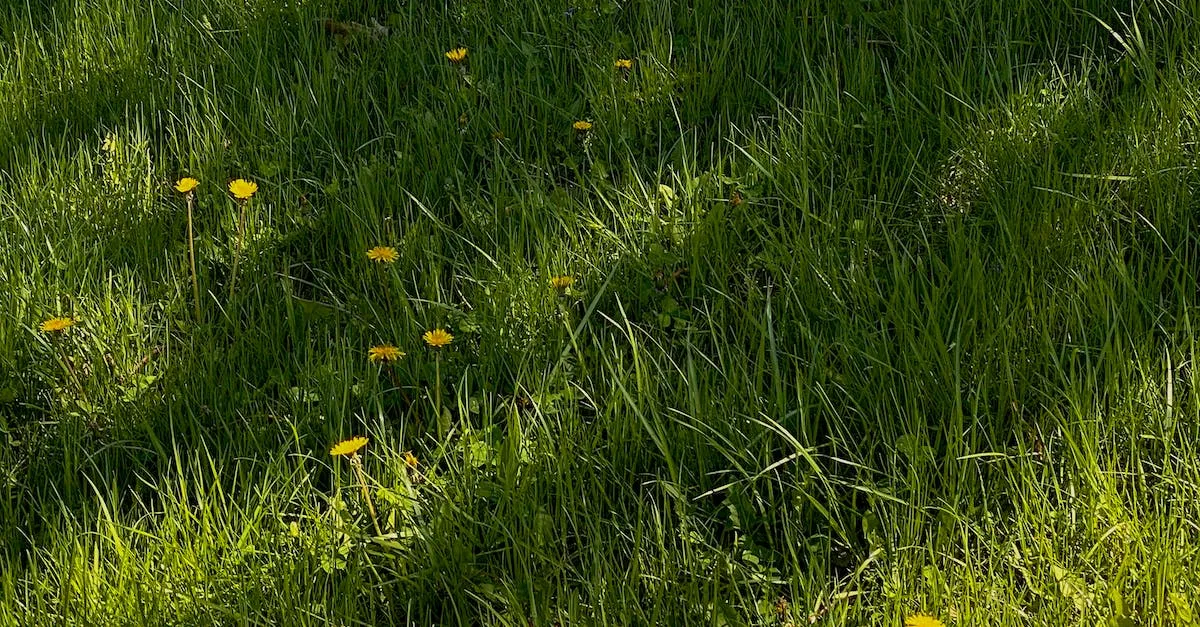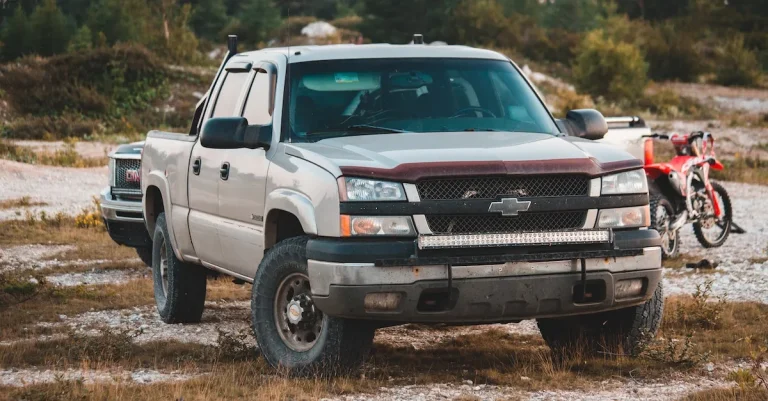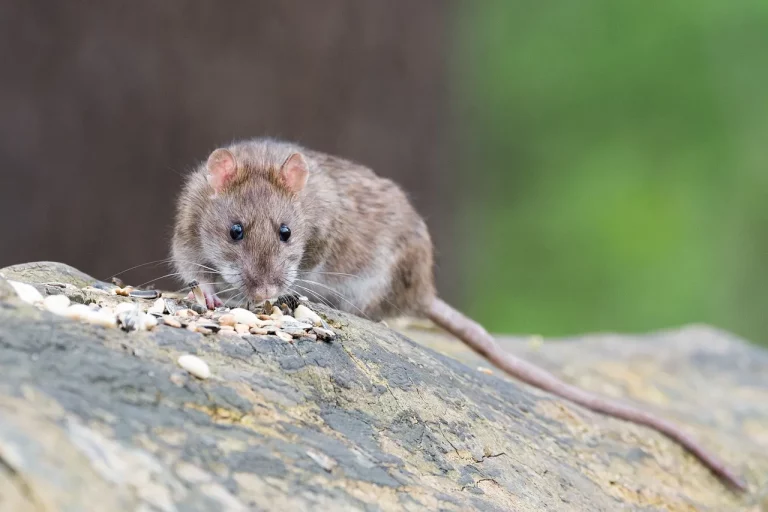How To Grow Grass In Florida
With its hot, humid climate and frequent thunderstorms, growing a lush, green lawn in Florida can seem daunting. But it is possible to cultivate a thriving Florida grass landscape by choosing the right grass varieties, properly preparing the soil, and providing attentive care and maintenance. If you dream of having a beautiful home lawn in the Sunshine State, don’t despair – we’ll walk you through everything you need to know.
If you’re short on time, here’s a quick answer: The keys to growing grass in Florida are selecting heat and drought tolerant grass types like St. Augustine, Bahia, or Zoysia; aerating and amending the soil properly; watering early in the day; fertilizing at the right times; and practicing good mowing habits.
Choosing the Right Grass for Florida
When it comes to growing grass in Florida, it is important to choose a variety that can withstand the unique challenges of the state’s climate. Florida’s hot and humid weather, along with its sandy or clay-heavy soil, can make it difficult for certain grass species to thrive.
However, there are several types of grass that are well-suited to the Florida climate. Here are some popular choices:
St. Augustinegrass
St. Augustinegrass is one of the most commonly used grass types in Florida. It is known for its ability to tolerate heat, humidity, and salt, making it a great choice for coastal areas. St. Augustinegrass has a lush, dark green color and a dense growth habit, providing a beautiful and resilient lawn.
It is also relatively low-maintenance, requiring less water and fertilizer compared to some other grass species.
Bahia grass
Bahia grass is another popular option for Florida lawns. This grass variety is known for its ability to withstand drought and its excellent tolerance to high temperatures. Bahia grass has a coarse texture and a light green color, making it less visually appealing compared to some other grass types.
However, its ability to thrive in sandy soils and its low maintenance requirements make it a practical choice for many Florida homeowners.
Zoysia grass
Zoysia grass is a warm-season grass that is well-suited to the Florida climate. It has a lush, dense growth habit and a medium to dark green color. Zoysia grass is known for its ability to tolerate both heat and cold, making it a versatile choice for homeowners in Florida.
It also has good tolerance to foot traffic, making it suitable for families with active children or pets.
Bermuda grass
Bermuda grass is a popular choice for homeowners who want a durable and resilient lawn. It has excellent heat and drought tolerance, making it well-suited to Florida’s climate. Bermuda grass has a fine texture and a medium to dark green color.
It is also known for its rapid growth and ability to quickly recover from damage. However, it can be invasive and requires regular mowing and maintenance to keep it in check.
Centipede grass
Centipede grass is a low-maintenance grass variety that is well-adapted to the Florida climate. It has good heat and drought tolerance and is known for its ability to grow in poor soils. Centipede grass has a light green color and a coarse texture.
It grows slowly, which means less mowing and maintenance compared to other grass types. However, it may not be as visually appealing as some other varieties.
When choosing the right grass for your Florida lawn, consider factors such as the amount of sunlight your lawn receives, the type of soil you have, and your maintenance preferences. It’s always a good idea to consult with a local lawn care professional or visit reputable websites like University of Florida’s IFAS Extension for more information on which grass types are most suitable for your specific location.
Preparing the Soil
Test soil pH and nutrient levels
Before planting grass in Florida, it is essential to test the soil pH and nutrient levels. Different types of grass have specific pH and nutrient requirements, so knowing the soil’s composition will help determine the best grass variety to grow.
You can purchase a soil testing kit from your local gardening center or contact your county’s agricultural extension office for professional soil testing services. By analyzing the soil, you can make informed decisions on how to amend it for optimal grass growth.
Aerate compacted areas
In areas where the soil is compacted, grass may struggle to establish healthy root systems. Compacted soil prevents water, air, and nutrients from reaching the grassroots, leading to poor growth. To alleviate soil compaction, consider aerating the lawn.
Aeration involves perforating the soil with small holes to allow for better airflow and water penetration. You can use a manual or mechanical aerator to achieve this. By aerating the soil, you create a conducive environment for the grass to grow deep, strong roots.
Add compost or topsoil to improve drainage
In Florida, where heavy rainfall is common, it is crucial to ensure proper drainage to prevent waterlogged soil. One way to improve drainage is by adding compost or topsoil to the existing soil. Compost is rich in organic matter and can help improve soil structure, allowing excess water to drain more efficiently.
Topsoil, on the other hand, can be used to level uneven areas and provide a better growing medium for the grass. By incorporating compost or topsoil, you can create a well-drained soil that promotes healthy grass growth.
Seeding, Sodding, Plugging
Determine the best planting method
When it comes to growing grass in Florida, there are three main planting methods to consider: seeding, sodding, and plugging. Each method has its own advantages and challenges, so it’s important to determine which one is best for your specific needs and circumstances.
If you have a large area to cover and you’re looking for a cost-effective option, seeding may be the way to go. This involves spreading grass seeds evenly across the desired area and then providing proper care and maintenance to encourage growth.
Seeding can be a bit more time-consuming and requires patience, as it can take several weeks for the grass to fully establish.
Sodding, on the other hand, offers instant results. With sodding, pre-grown grass is cut into squares or rolls and then laid down on the prepared soil. This method is perfect if you want an immediate green lawn, but it can be more expensive than seeding and may require professional installation.
Plugging is a middle-ground option that involves planting small plugs or patches of grass in the desired area. This method allows for quicker establishment than seeding but may take longer than sodding to achieve a fully covered lawn.
Plugging is often used for repairing small areas or filling in bare spots.
Follow timing guidelines for your region
Timing is crucial when it comes to planting grass in Florida. The best time to plant grass depends on the specific region within the state and the type of grass you’re growing. It’s important to research and follow the recommended planting times for your area to ensure the highest chances of success.
For most regions in Florida, the ideal time for planting warm-season grasses like St. Augustine or Bermuda grass is in the late spring or early summer when the soil temperatures have warmed up. This allows the grass to establish and grow vigorously during the warmer months.
However, if you’re planting a cool-season grass like Kentucky bluegrass or tall fescue, the best time to plant is in the fall when the temperatures are cooler.
Use quality seeds or sod
Regardless of the planting method you choose, using quality seeds or sod is essential for a successful lawn. High-quality seeds or sod will have better germination rates and will result in healthier, more vibrant grass.
When purchasing grass seeds, look for reputable brands or suppliers that offer certified seeds. These seeds have been tested for purity and germination, ensuring that you’re getting the best possible product.
If you’re opting for sodding, make sure to source your sod from a reliable nursery or sod farm to ensure its quality.
Space plugs properly
If you decide to go with the plugging method, proper spacing is crucial for optimal growth. The recommended spacing between plugs depends on the type of grass you’re planting. For example, St. Augustine grass plugs should be spaced about 6 to 12 inches apart, while Bermuda grass plugs should be spaced around 12 to 18 inches apart.
By spacing the plugs properly, you allow enough room for each individual plug to spread and fill in the gaps, resulting in a lush and uniform lawn. It’s also important to provide proper care and maintenance to the plugs, such as regular watering and fertilization, to encourage healthy growth.
For more detailed information on growing grass in Florida, you can visit the University of Florida’s Institute of Food and Agricultural Sciences website at https://ifas.ufl.edu/. They provide a wealth of resources and research-backed information to help you achieve a beautiful and thriving lawn in the Sunshine State.
Watering and Fertilizing
When it comes to growing grass in Florida, proper watering and fertilizing are essential for a lush and healthy lawn. Here are some tips to help you achieve that:
Water deeply 2-3 times per week
To ensure your grass gets enough water, it’s important to water it deeply. This means watering for a longer duration to allow the water to penetrate the soil and reach the roots. Aim for about 1 inch of water per week, divided into 2-3 watering sessions.
This will encourage deep root growth and make your grass more resilient to drought conditions.
Avoid frequent shallow watering
While it may be tempting to water your lawn frequently with shorter durations, this can actually be detrimental to the health of your grass. Shallow watering promotes shallow root growth, making your lawn more susceptible to drought and other stressors.
Instead, focus on deep watering as mentioned earlier, and allow the soil to dry out between waterings. This will encourage your grass to develop deep, strong roots.
Fertilize based on grass type and season
Fertilizing your lawn is crucial for providing it with the necessary nutrients to thrive. The type of grass you have will determine the specific fertilizer needs, so it’s important to know your grass type. Additionally, the timing of fertilization is also important.
Generally, it’s recommended to fertilize warm-season grasses in the late spring or early summer, and cool-season grasses in the fall. Be sure to follow the instructions on the fertilizer package and avoid over-fertilizing, as this can lead to excessive growth and potential damage to your grass.
Spot treat weeds
Weeds can quickly invade a lawn and compete with your grass for nutrients and water. To keep your grass healthy and weed-free, it’s important to spot treat weeds as soon as you notice them. There are various herbicides available specifically designed for different types of weeds.
Follow the instructions carefully and apply the herbicide only to the affected areas, avoiding contact with your grass. Regularly inspect your lawn for any new weed growth and address it promptly to prevent further spreading.
For more in-depth information on watering and fertilizing grass in Florida, you can visit the University of Florida IFAS Extension website at https://sfyl.ifas.ufl.edu/lawn-and-garden/. They provide valuable resources and recommendations tailored to the region’s climate and grass types.
Mowing, Aeration and Care
Maintain proper mowing height
When it comes to growing grass in Florida, one of the most important factors to consider is maintaining the proper mowing height. The ideal mowing height will depend on the type of grass you have, but in general, it is recommended to keep the grass at a height of around 2 to 3 inches.
This height allows for optimal root development and helps the grass to withstand heat and drought. Mowing too short can weaken the grass and make it more susceptible to pests and diseases. On the other hand, mowing too high can lead to thatch buildup and inhibit the growth of new grass shoots.
Regular mowing at the correct height will promote a healthier and more vibrant lawn.
Sharpen mower blades regularly
Another important aspect of lawn care in Florida is to regularly sharpen your mower blades. Dull blades can tear the grass instead of cleanly cutting it, which can lead to a dull and unhealthy appearance.
It is recommended to sharpen the blades at least once a year, or more often if you have a large lawn or frequently mow over rough terrain. Sharp blades not only improve the appearance of your lawn but also promote better grass health by reducing stress and minimizing the risk of disease.
A simple task like sharpening your mower blades can make a significant difference in the overall health and appearance of your lawn.
Dethatch and aerate annually
To maintain a healthy lawn in Florida, it is essential to dethatch and aerate your lawn annually. Thatch is a layer of dead grass, roots, and other organic matter that accumulates on the surface of the soil.
Excessive thatch can prevent water, air, and nutrients from reaching the roots of your grass, leading to poor growth and increased susceptibility to pests and diseases. Dethatching involves removing this layer of thatch using a rake or a specialized dethatching machine.
Aeration, on the other hand, involves creating small holes in the soil to allow for better air and water circulation. Both of these processes help to promote root growth and improve the overall health of your lawn.
Re-sod bare or damaged spots
If you have bare or damaged spots in your lawn, re-sodding is an effective way to restore the beauty and health of your grass. Re-sodding involves removing the existing dead grass and replacing it with fresh sod.
Before re-sodding, it is important to prepare the area properly by removing any debris, loosening the soil, and adding compost or topsoil if needed. Once the new sod is laid, it should be watered regularly to promote root establishment.
Re-sodding is a great solution for areas that have been affected by pests, diseases, or extreme weather conditions. It allows you to quickly and efficiently restore the appearance of your lawn and prevent further damage.
Conclusion
Although Florida’s climate can make growing grass a challenge compared to other regions, taking the right steps will ensure a lush, verdant lawn. The keys are choosing the right grass variety, preparing the soil well, using proper planting techniques, watering and fertilizing correctly, and practicing good maintenance habits. With the proper knowledge and care, you can cultivate a stunning grass lawn that becomes the envy of your neighborhood.








